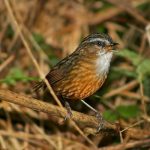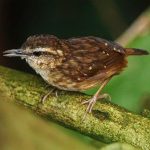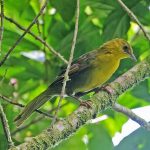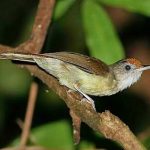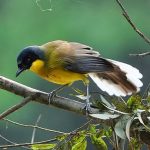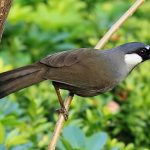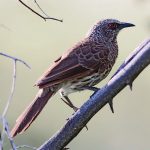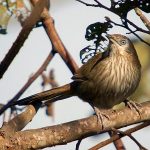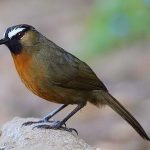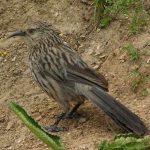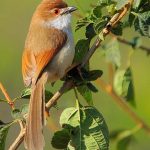Rusty-cheeked scimitar-babbler
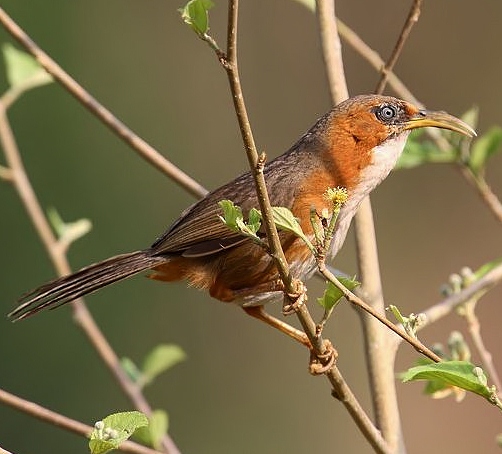
 |
| Photo by Nitin Srinivasamurthy (Oriental Bird Images) |
Common name:
rusty-cheeked scimitar-babbler (en); zaragateiro-de-simitarra-ferrugíneo (pt); pomatorhin à joues rousse (fr); cimitarra carirrufa (es); rotwangensäbler (de)
Taxonomy:
Order Passeriformes
Family Timaliidae
Range:
This species is found in the foothills of the Himalayas, from north-eastern Pakistan to Nepal, Bhutan and northern Myanmar and Thailand.
Size:
These birds are 27-28 cm long and weigh 50-60 g.
Habitat:
They are mainly found in dense scrublands and forest edges, often near human settlements.
Diet:
Rusty-cheeked scimitar-babbler forage on the ground among leaf litter, taking adult and larval insects, molluscs, crustaceans, chilopods and earthworms. This mainly carnivorous diet is sometimes supplemented with berries and fruits.
Breeding:
These birds breed in April-June. The nest is a rough, loosely built structure made of dead leaves, grasses, bamboo leaves and ferns, placed on a steep embankment or at the base of a tree. There the female lays 2-4 white eggs with dark spots, which are incubated by both sexes for 14-16 days. The chicks fledge 2 weeks after hatching, but continue to receive food from parents for another month.
Conservation:
IUCN status – LC (Least Concern)
This species has a relatively large breeding range and is described as common. The population is suspected to be stable in the absence of evidence for any current declines or substantial threats.
